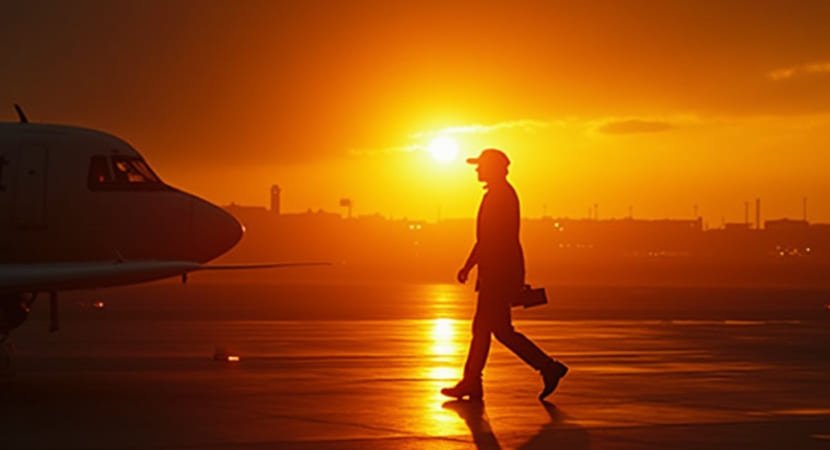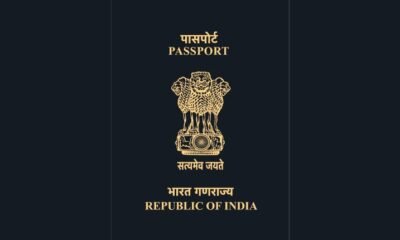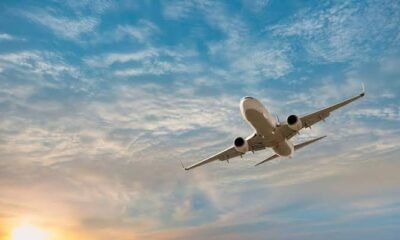Flight Buzz
India extends airspace ban for Pakistani airlines till August 23

Minister of State for Civil Aviation and Cooperation, Murlidhar Mohol, announced the development on Tuesday via X (formerly Twitter). “Update on Airspace Restriction. The Notice to Airmen (NOTAM) restricting Pakistani aircraft from entering Indian airspace has been officially extended until 23rd August 2025,” Mohol said in his post.
Flight Buzz
Alaska Airlines Gets Boost From Premium Revenue

Key Points
- Alaska Airlines achieved record second quarter revenue, driven by strong performance in premium seating and its loyalty program.
- Nearly half of Alaska’s revenue came from outside the main cabin, with premium and loyalty program revenue each up 5%.
- The airline forecasts a 10-cent per share earnings impact in the third quarter due to a recent IT outage, which was not a cybersecurity breach.
Summary
Alaska Airlines reported record revenue for the second quarter, fueled by increased demand for premium seating and its loyalty program, with 49% of revenue originating outside the main cabin. While the airline had previously forecasted a potential revenue hit due to softening demand, it instead saw a 28% increase in operating revenue. However, Alaska anticipates a 10-cent per share earnings impact in the third quarter as a result of a recent IT outage, which temporarily grounded flights but was not linked to a cybersecurity incident.
Flight Buzz
American Airlines Revives Price-Hike Tactic for One-Way Flights, What Future Passengers Need to Know Now

Thursday, July 24, 2025
FORT WORTH, TX- American Airlines (AA) is bringing back a fare type that substantially increases the price of the one-way domestic flight compared with the round-trip ticket – a move is being mimicked by the entire U.S. industry. And now this method, which had largely fallen by the wayside over the last decade, is making a significant comeback, particularly for last-minute travel.
Rising One-Way Fares, A Trend on The Rise
Commuters flying between busy beach routes such as Tampa (TPA) to Miami (MIA) are experiencing drastically different fares. On American Airlines, for instance, a Main cabin one-way fare can cost up to $287. But as part of a round trip, that same segment could be as low as $174 in Basic Economy or $234 in the Main fare, a dynamic that represents a significant pricing strategy change.
According to data compiled by Thrifty Traveler, which analyzed over 2,000 itineraries, more than half of them showed higher costs when booked as two one-ways rather than a round-trip. The disparity was most apparent for bookings made within two weeks of departure, where over 90% of round-trips were found to be more economical.
Airlines Deepen Fare Distinctions Across The Board
American Airlines is not alone. Delta Air Lines (DL), Alaska Airlines (AS), United Airlines (UA) and Southwest Airlines (WN) have all followed suit with offering similar pricing. Of them, Delta looks like being the most aggressive in using the technique in question.
This pricing model works against business and urgent travelers — groups who are also more likely to purchase one-way tickets at the last minute. For airlines, it is a plan to push up revenue per seat by attracting customers stressed for time and with few options willing to booney up rather than fly commercial.
Deep Dive- Fare Class Comparisons
The fare schedule at American Airlines illustrates how diverse the pricing has grown. The Main fare, which includes standard seat selection and changes but no checked bags, runs about $287 for a one-way trip. Jumping up to Main Plus at $348 throws in one free checked bag and early boarding. Main Select at $377 gets you priority boarding and the same-day flight change. You get all the frills as the First class fare (IFT) offers dedicated seating, two checked bags and full refundability for the same price.
By contrast, round-trip fares are typically much cheaper. The cheapest, at $174, is Basic Economy, but it’s subject to extremely restrictive change and refund rules. At $234, the Main fare is more flexible, but there are fewer goodies included. Main Plus, $356, and Main Select, $429, offer more convenience and perks than formulating two individual one-way tickets for the price overall.
Dynamic Pricing Powered by AI
What’s driving this strategy? The answer lies in technology. Airlines are leaning heavily into artificial intelligence (AI) and dynamic pricing systems to tailor fares in real time. These tools evaluate variables such as booking timing, customer profile, search history, and route demand.
Publicly, Delta Air Lines has expressed that it will determine the prices for 20% of its flights using artificial intelligence-powered models by end of year. These algorithms are not only reacting to demand, they are anticipating customer intent. For example, last-minute reservations often indicate that a business traveler might be making the booking, and he or she might be more willing to pay for a flexible or a time-sensitive trip.
Customer Impact And Market Response
The strategy can help airlines increase revenue, but can be an annoyance to travelers looking for inexpensive one-way tickets — especially ones booking travel close to the date of travel. Critics say the strategy is opaque and punishes travelers who require flexibility.
Yet airlines argue the model is necessary. Already operating on thin margins, carriers depend on ancillary revenue streams such as loyalty programs, baggage fees and credit card partnerships. Dynamic fare structures are another such instrument to adjust earnings and maximise the sales of seats.
But the prophesied power of consumer behavior is a formidable check. If travelers choose to eschew costly one-way fares in greater numbers by hopping from airline to airline, by postponing bookings or by bundling trips in new ways, the pressure could eventually prompt carriers to rethink their pricing. The airline industry has reversed other policies in response to public outcry in the past.
Final Thoughts
Inflated one-way fares are staging a comeback, represents legacy airline behavior, but significantly turbocharged by AI. It’s good news for airline revenue models, but also makes it clear that for travelers it pays to compare fare structures and consider booking round-trip — even when planning a one-way.
In the meantime, passengers are advised to book early, check more than one carrier and figure out what each fare class gets you so you won’t have to pay through the nose for a one-way ticket at a time when pricing is getting more dynamic.
Flight Buzz
United Airlines Now Observes Wedding On A Flight From New York To Orlando, Learn What This Says About Evolving Travel Trends

Thursday, July 24, 2025
In a surprise heartwarming twist, a couple got married on board a United Airlines Internet|Entertainment Service aircraft, on it’s way from Newark (EWR) to Orlando (MCO), ushering in a new era of travel and tourism. This dare ‘wedding in the sky’ while in flight, on the couple’s way to their honeymoon, has grabbed the attention of the global travelers and aviation industry. And so Wednesday’s mile-high ceremony set a bizarre wedding bar that simultaneously turned their marriage into a personal milestone and a landmark moment in the culture of travel.
The Unexpected Ceremony: A Friendly Challenge Becomes Reality
What began as a friendly challenge between friends quickly escalated into a life-changing event. Groom Jake Meli was inspired by a friend’s cruise ship wedding and decided to elevate his own ceremony by marrying mid-air. His idea, which started as a fun concept, became a reality when he and Abigail Power decided to marry aboard the flight. The couple’s wedding onboard the United Airlines Boeing 737 was a surprise to the passengers, who had no idea that a wedding was about to take place as they boarded their flight to Florida.
The choice of flying to Orlando, one of the world’s most popular travel destinations, was fitting, as it is home to Disney World and Universal Studios, both of which offer endless attractions for couples and honeymooners. The wedding ceremony was not only a romantic gesture but a unique expression of how travel can be woven into life’s most significant moments.
Impact of the Event on Travel Trends and Destination Weddings
This mid-air wedding has shone a spotlight on a growing trend in global travel: destination weddings and unique celebratory experiences. As more couples seek novel ways to commemorate important moments, destination weddings, particularly those held in unexpected locations, are gaining popularity. While some prefer the traditional route of a beach or exotic locale, others like Jake and Abigail are embracing unconventional settings to make their wedding day truly memorable.
As the world has adapted to new norms in the wake of the COVID-19 pandemic, travelers are seeking experiences that offer both adventure and meaningful moments. This trend aligns with the growing demand for personalized and immersive travel experiences. For airlines, offering in-flight weddings or marriage services could become a unique selling point, allowing travelers to celebrate milestones in a way that has never been done before.
The Growing Trend of Unconventional Weddings in Travel
The idea of marrying in the sky is not entirely new, but Jake and Abigail’s wedding is a fresh and highly publicized example of this evolving trend. Over the past few years, unconventional wedding venues have been gaining popularity. From helicopter weddings to mountaintop ceremonies and underwater nuptials, couples are increasingly choosing to marry in places that reflect their personal interests and passions.
In-flight weddings offer a new layer of excitement for those seeking to combine travel and romance. Airlines that begin offering in-flight weddings or ceremonies could tap into a niche market of couples who are looking for something out of the ordinary. This can also lead to a boom in tourism for destinations that are easily accessible by air, making destinations like Orlando even more desirable for couples seeking a unique wedding experience.
A New Chapter in Honeymooning: Couples Celebrate Above the Clouds
After exchanging vows, the newlyweds were treated to champagne and cake while being flown over the skies of the United States on their way to their honeymoon destination in Orlando. The Boeing 737 cabin was adorned with twinkling lights, and the flight crew made an announcement over the PA system, further adding to the special moment. For many, this new form of honeymooning presents an exciting way to celebrate a life-changing event while enjoying the perks of air travel.
Airlines could also look at the potential for catering to honeymooners and couples on their journeys, offering specialized services such as wedding packages, romantic meals, or even providing a serene, quiet cabin experience for couples who want privacy during their special moment.
The Role of Airlines in Shaping Travel Celebrations
The ability of airlines to create memorable experiences for passengers has always been an important element of their service offerings. In-flight celebrations, whether for birthdays, anniversaries, or weddings, could emerge as a prominent service in the future. This wedding on a United Airlines flight is just the beginning of what could become a popular service for couples looking to celebrate their love in a once-in-a-lifetime way.
Airlines may eventually partner with wedding planners and destination providers to offer comprehensive wedding and honeymoon packages that cater to the desires of travelers who want something extraordinary. For example, it’s possible that couples might soon be able to book an entire in-flight wedding experience, complete with decorations, wedding planners, and special guest accommodations.
The Bigger Picture: How This Impacts the Tourism Industry
The rise of unconventional wedding and travel experiences could have far-reaching effects on the tourism and travel industries. As people seek unique ways to mark significant life events, destinations known for adventure, romance, and luxury could see a surge in popularity. Locations that are easily accessible by air, especially those with beautiful landscapes or iconic landmarks, could capitalize on the growing trend of destination weddings.
The mid-air wedding of Jake Meli and Abigail Power also highlights how airlines can innovate within their services to offer more than just transportation. By incorporating celebratory experiences into their itineraries, airlines could attract a new demographic of travelers looking to combine travel with meaningful milestones. Additionally, this could lead to the development of new packages and offers designed to cater to couples, making wedding travel a lucrative market for the airline industry.
Conclusion: The Future of Weddings in the Sky
The United Airlines flight from Newark to Orlando on which the wedding took place demonstrates how the change in travel is more and more not so much about where you are going, but what you are doing. There’s no longer such a thing as weddings and other big life events stuck in traditional venues. This in-air marriage sets a standard as to what this booming niche in travel and tourism may be in the future. With a world of travel opportunities at its disposal, so should the wishlist of the modern day travelers, who dream from their everyday realities, of adventures, celebrations and life-changing moments. Airlines, destinations, and the travel sector as a whole stand to benefit from these trends, and the opportunities to create special travel experiences are limitless.
Tags: Airline Celebrations, destination weddings, florida, Flying Wedding, global travel, honeymoon, Mid-Air Wedding, New York, newark, Orlando, travel trends, US, US Travel News
-

 Brand Stories3 days ago
Brand Stories3 days agoBloom Hotels: A Modern Vision of Hospitality Redefining Travel
-

 Brand Stories2 days ago
Brand Stories2 days agoOlive Living: India’s Intelligent, Community-Centric Hospitality Powerhouse
-

 Destinations & Things To Do3 days ago
Destinations & Things To Do3 days agoUntouched Destinations: Stunning Hidden Gems You Must Visit
-

 AI in Travel3 days ago
AI in Travel3 days agoAI Travel Revolution: Must-Have Guide to the Best Experience
-

 Brand Stories3 weeks ago
Brand Stories3 weeks agoVoice AI Startup ElevenLabs Plans to Add Hubs Around the World
-

 Brand Stories2 weeks ago
Brand Stories2 weeks agoHow Elon Musk’s rogue Grok chatbot became a cautionary AI tale
-

 Asia Travel Pulse3 weeks ago
Asia Travel Pulse3 weeks agoLooking For Adventure In Asia? Here Are 7 Epic Destinations You Need To Experience At Least Once – Zee News
-

 AI in Travel3 weeks ago
AI in Travel3 weeks ago‘Will AI take my job?’ A trip to a Beijing fortune-telling bar to see what lies ahead | China
-

 Brand Stories3 weeks ago
Brand Stories3 weeks agoChatGPT — the last of the great romantics
-

 Brand Stories2 weeks ago
Brand Stories2 weeks agoHumans must remain at the heart of the AI story













You must be logged in to post a comment Login